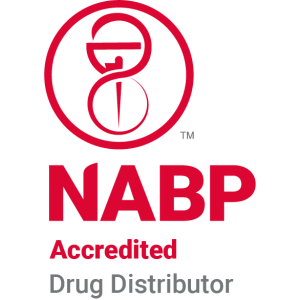Compounding for patient-specific needs
The Role and Necessity of Pharmaceutical Compounding
Pharmaceutical compounding is an essential practice in today's healthcare ecosystem, responding to the need for medications that are customized to the specific requirements of individual patients. This process, performed by skilled pharmacists or physicians, adjusts medication formulations to better suit the unique medical conditions of patients, providing a critical alternative when mass-produced medications fall short. This article delves into the intricacies of compounding, highlighting its benefits, regulatory landscape, and the roles compounding pharmacies play in enhancing patient care.
What Is Compounding in Modern Medicine?
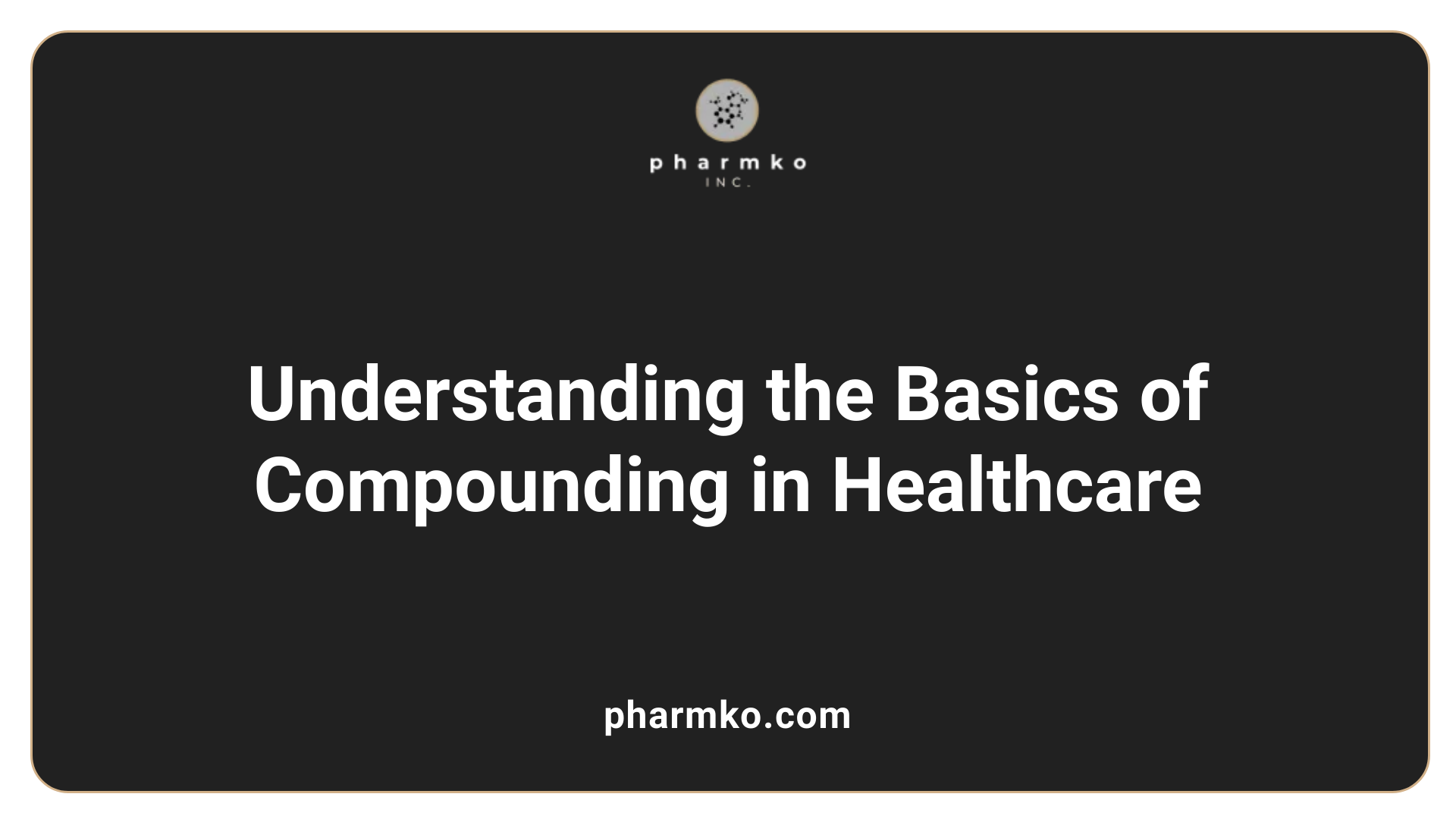
What does compounding mean in medical terms?
Compounding in medical terms refers to the process of creating customized medications tailored to meet the specific needs of individual patients. This practice is often performed by licensed pharmacists or physicians when commercially available FDA-approved drugs do not meet a patient's requirements, such as in cases of allergies or special dosage needs.
Definition of compounding
In depth, compounding involves preparing, mixing, or altering drug ingredients to formulate a medication specific to an individual's needs. This can include adjusting medications for children who may require liquid forms instead of pills or eliminating allergens for those with sensitivities.
Process and practices
Compounding processes typically require pharmacists to collaborate closely with healthcare providers and patients. This ensures each compounded medication adheres to specific clinical justifications. The production of compounded medications takes place under stringent quality controls in licensed pharmacies and outsourcing facilities, emphasizing the importance of safety and efficacy.
Types of compounding
Compounding can be classified into three types:
- Non-sterile compounding : focuses on preparations that do not require contamination-free environments.
- Sterile compounding : includes medications that must be free from microbial contamination, essential for injectables.
- Hazardous compounding : involves preparing medications that present risks to health, necessitating strict safety measures.
Overall, compounding plays a pivotal role in patient care, allowing for the ongoing customization of treatments to meet individual medical needs effectively.
The Need for Compounded Medications
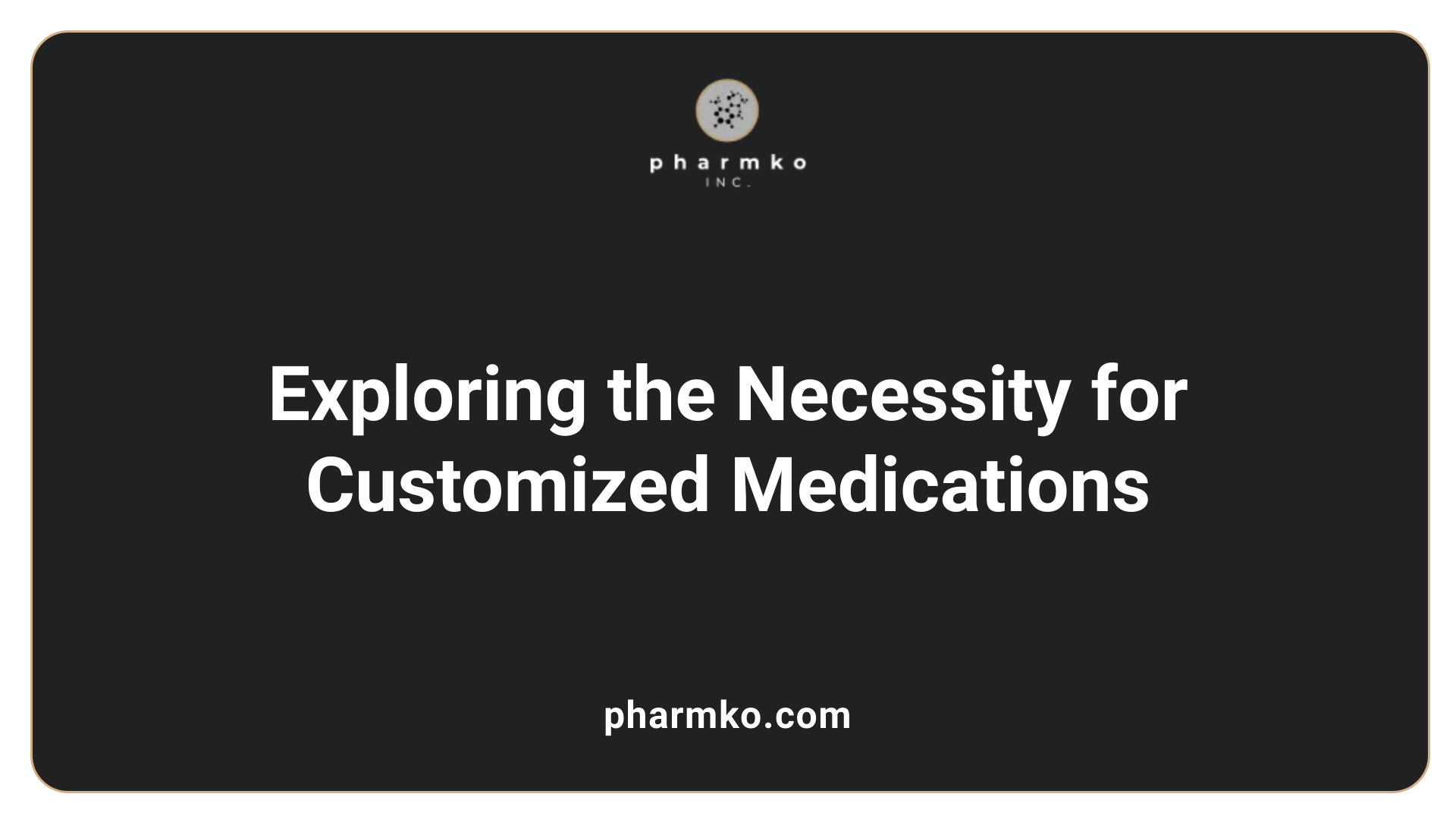
Why do some patients need compounded drugs?
Some patients require compounded drugs due to specific medical issues that hinder their ability to use standard FDA-approved medications. For example, patients may have allergies to certain ingredients, such as gluten or lactose, or they may have difficulties swallowing pills. Compounding allows pharmacists to create tailored medications that meet these unique patient needs. This could involve altering the dosage form to a liquid for pediatric patients or combining medications for easier administration.
However, it’s essential to understand that compounded drugs are not FDA-approved. This means they have not undergone the same rigorous safety and effectiveness evaluations that commercially available medications experience, which can lead to significant health risks like contamination or incorrect dosages. Thus, it is advisable for patients to prioritize FDA-approved options whenever suitable medications are accessible, particularly in preventing potential health issues.
Who benefits from compounded medications?
Compounded medications provide significant advantages for various patient populations:
- Children: Tailored liquid formulations are created for easier ingestion.
- Geriatric Patients: Custom dosages can cater to age-specific needs, enhancing adherence.
- Patients with Allergies: Formulations can exclude allergens, making medications safer for sensitive individuals.
- Individuals with Rare Diseases: Customized therapies address specific conditions not met by standard drugs, including managing symptoms through combination medications.
This growing demand for patient-specific compounded medications underscores the crucial role they play in contemporary healthcare.
Compounding in Topical Medications
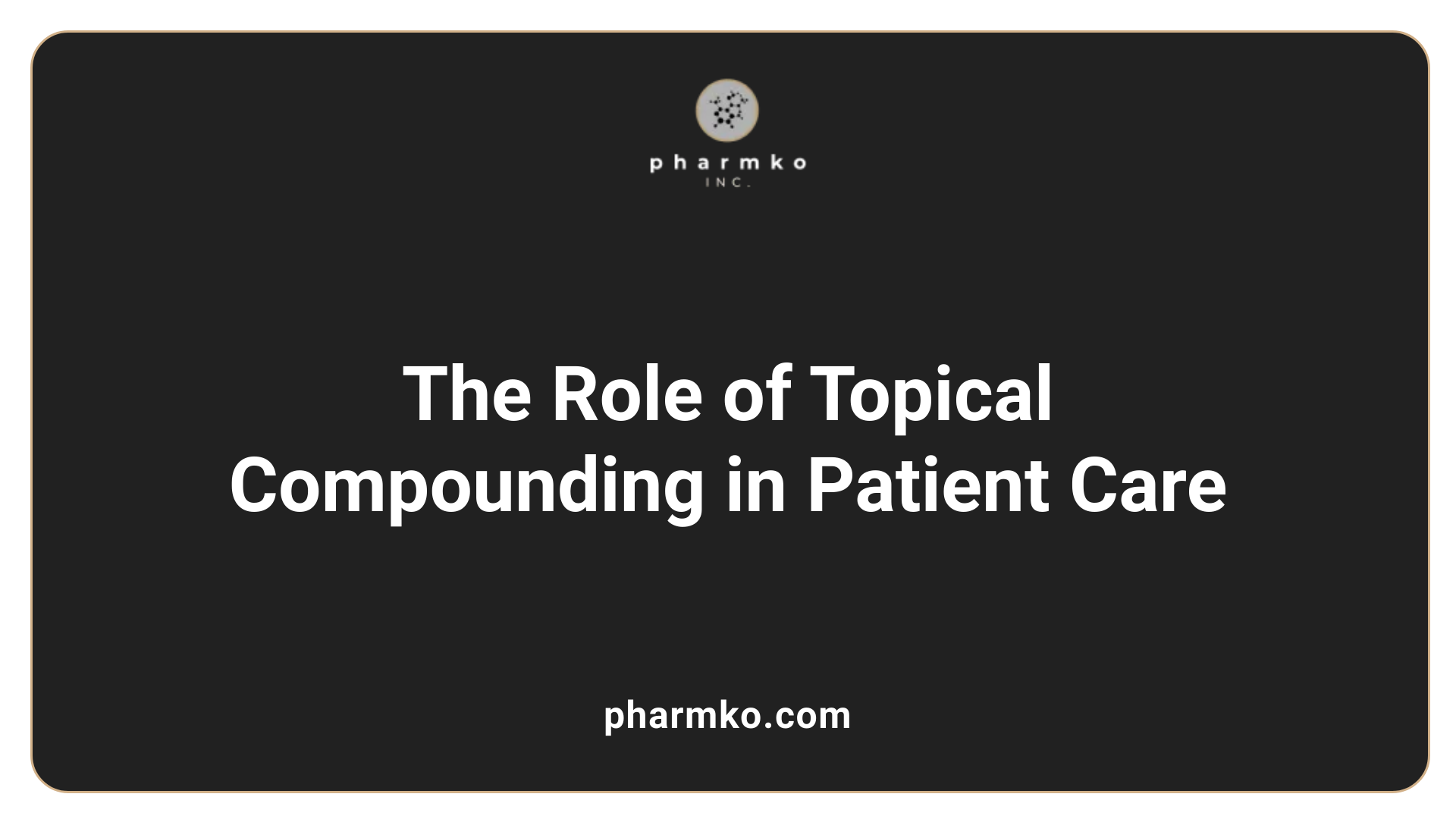
Benefits of topical compounding
Topical compounded medications play a critical role in patient care, especially for those managing chronic pain or localized conditions. One significant benefit is that they allow for targeted drug delivery. This means that the medication can act directly at the site of the problem, reducing the need for high systemic doses and minimizing potential side effects.
Additionally, these compounded preparations can include specific combinations of active ingredients that may not be available in commercial products, enhancing their effectiveness for individual patients. For instance, a compounded topical gel can blend a pain reliever with an anti-inflammatory agent, providing greater relief for patients suffering from arthritis or muscle pain.
Customization for allergies and sensitivities
Another compelling reason for compounding topical medications is their customization to meet unique patient needs. Many patients may have allergies or sensitivities to certain excipients in standard formulations such as dyes, preservatives, or gluten. Compounding pharmacies can prepare medications that exclude these problematic ingredients, ensuring patient safety and satisfaction.
Moreover, this tailored approach is essential for pediatric and geriatric patients, who often require alternative dosage forms or concentrations to suit their specific requirements and enhance adherence.
Reduction of side effects
Compounded topical medications also minimize systemic side effects associated with oral medications. Because they can be formulated for localized effect, patients are less likely to experience adverse reactions common with drugs that circulate through the bloodstream. This targeted application is critical for individuals with complex medical histories or those taking multiple medications, as it helps mitigate potential drug interactions.
In summary, the ability to customize compounded topical medications can significantly improve patient outcomes by addressing specific medical needs and enhancing overall comfort with reduced risks.
Regulatory Standards and Safety Protocols in Compounding
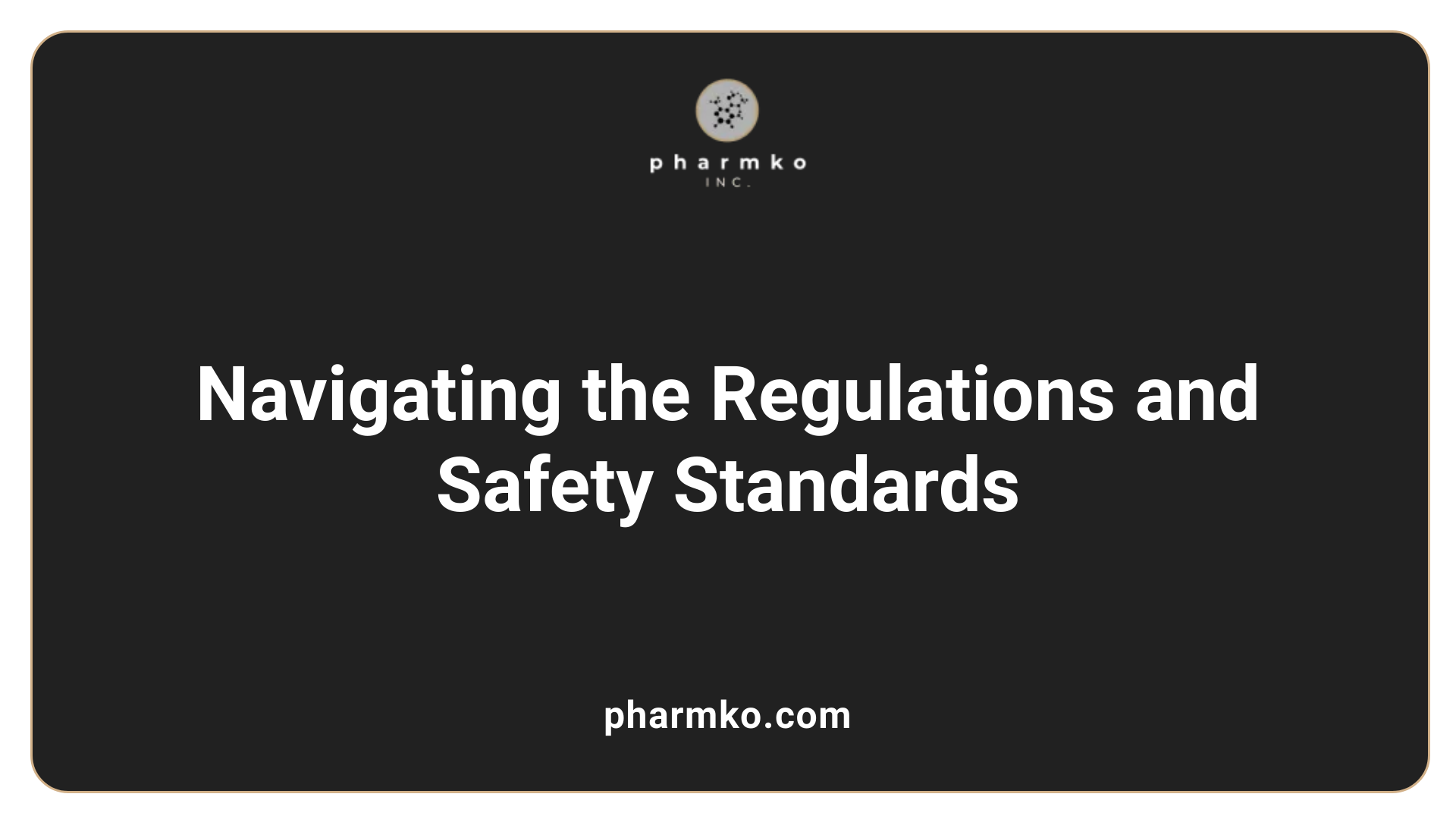
What are the new compounding pharmacy regulations?
The landscape of compounding pharmacy regulations has evolved significantly, particularly influenced by the Drug Quality and Security Act (DQSA) . This legislation established strict guidelines aimed at enhancing the safety and quality of compounded medications. Under Section 503A , compounded drugs can be exempt from FDA approval, provided they meet specific conditions. Conversely, Section 503B allows the formation of outsourcing facilities, which are obliged to follow stringent good manufacturing practices (GMP).
Recent updates effective November 1, 2023 , to USP General Chapters, specifically <795> , <797> , and <800> , have introduced enhanced standards focusing on the quality and safety of compounding practices. Notably, the FDA has also proposed a new rule—announced on March 20, 2024 —to create 'Demonstrable Difficulties for Compounding Lists' (DDC lists), which would restrict the compounding of certain complex drug products. This comprehensive regulatory framework is designed to safeguard patients while maintaining essential access to compounded medications.
Safety standards and challenges
Compounding pharmacies must navigate various safety protocols to ensure the quality of their products. Compliance with quality standards established by the United States Pharmacopeia (USP) is crucial. These guidelines address potential contamination risks, correct dosages, and patient safety. However, challenges persist, particularly regarding varying state regulations, potential errors, and contamination incidents, emphasizing the importance of stringent oversight and adherence to established practices.
Role of FDA and USP guidelines
The FDA and USP both play pivotal roles in ensuring that compounding pharmacies maintain high-quality standards. The FDA’s oversight is primarily regulatory, focusing on compliance with federal laws and ensuring harmful substances do not enter the market. Meanwhile, USP develops detailed standards that guide pharmacists in their compounding practices, emphasizing consistency in ingredient purity and preparation methods. Together, these organizations help ensure that compounded medications are made safely and effectively, addressing the unique needs of patients.
Challenges and Misconceptions in Compounding Practices
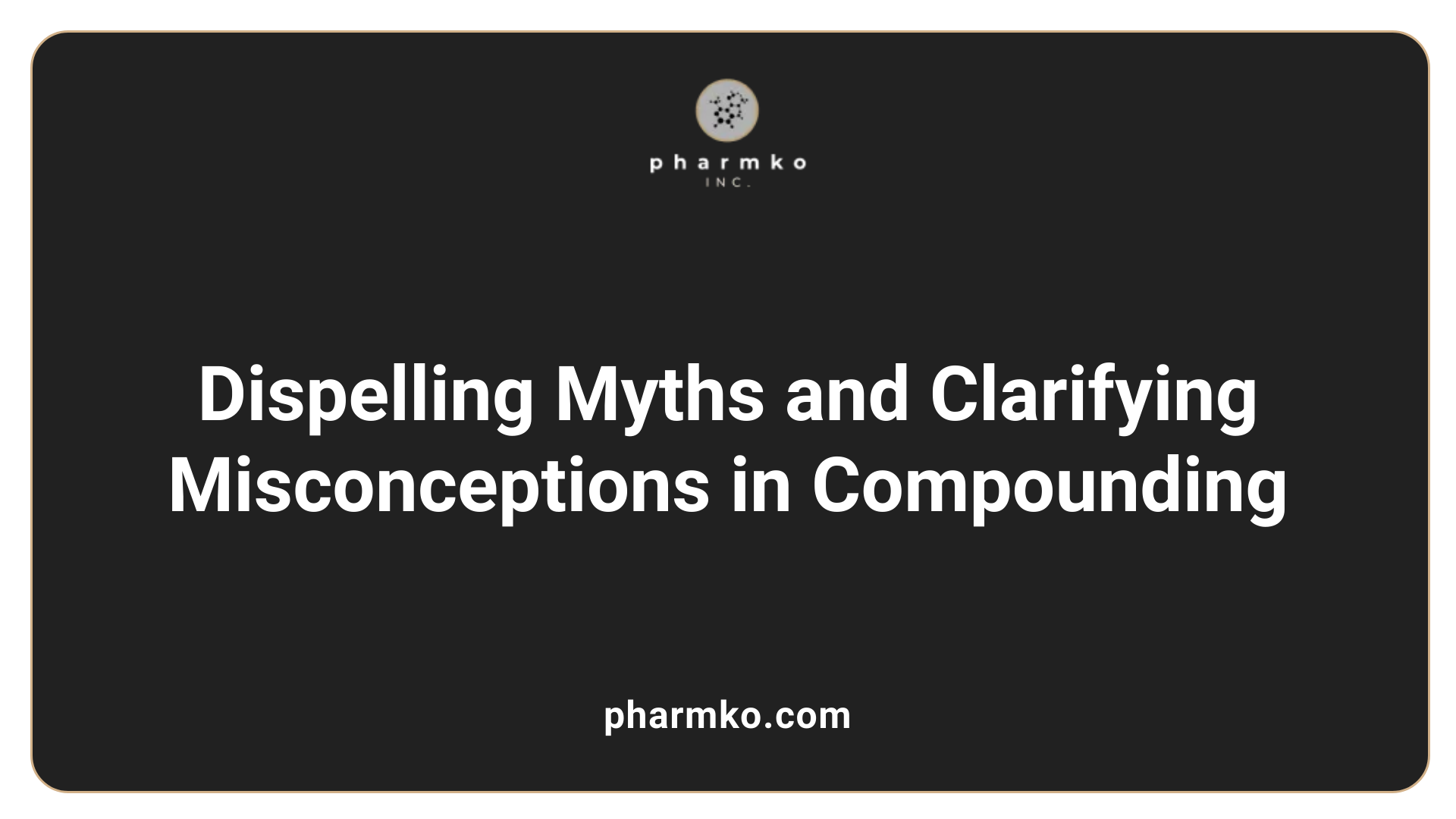
What is not considered compounding?
Compounding specifically refers to altering a commercially available drug to meet individual patient needs. Therefore, activities that do not involve such changes do not qualify as compounding. For instance, repackaging medications without alteration falls outside of this definition. The FDA clarifies that merely preparing medications according to the manufacturer's package instructions is not compounding. Similarly, mixing and reconstituting drugs according to approved labeling also does not meet the criteria for compounding.
In hospital settings, stocking medications in anticipation of patient-specific prescriptions does not necessarily invoke compounding regulations as outlined by the FDA. Any practice that does not modify the drug beyond its original form, such as simply repackaging it or adhering strictly to manufacturer guidelines, is not classified as compounding.
Common misconceptions
There are several misconceptions about compounding that can lead to confusion among patients and healthcare professionals alike. One major misunderstanding is that all compounded medications are inherently unsafe or ineffective due to their lack of FDA approval. While it is true that compounded drugs are not verified by the FDA before marketing, this does not automatically imply poor quality. Many compounding pharmacies adhere to rigorous standards and regulations to ensure safety and efficacy.
Clarifications on non-compounding activities
In addition to repackaging, other activities like combining drugs without altering their properties or preparing medications that do not have patient-specific prescriptions also fall outside of compounding. Awareness of these distinctions is vital for both healthcare providers and patients, as it affects how compounded medications are perceived and utilized in treatment plans. Proper understanding helps to navigate the complexities in pharmaceutical compounding and its significant role in personalized medicine.
The Future of Compounding in Personalized Medicine
As healthcare continues to evolve, the demand for personalized medicine through compounding is expected to grow. Compounding represents both a return to traditional pharmaceutical practices and a step forward, leveraging modern techniques to address patient-specific needs effectively. By adhering to regulatory standards and enhancing safety protocols, compounding can continue to play a pivotal role in personalized patient care, offering unique solutions where standard treatments fall short. Educating both healthcare professionals and patients on the benefits and risks associated with compounded medications will be essential in navigating this complex, yet rewarding field.
References
- Compounding and the FDA: Questions and Answers
- Human Drug Compounding - FDA
- [PDF] Compounding Guidances Frequently Asked Questions - ASHP
- [PDF] Ensuring Patient Safety in Compounding of Medicines - USP
- The Rise of the Compounding Pharmacist and Patient-Specific ...
- Patient-Specific 503A Compounding - Belmar Pharma Solutions
- How Compounding Can Help Doctors with Patient Care
- Updated Compounding Standards Help Advance Quality and ...
- Compounding Services
- [PDF] Pharmaceutical compounding: Safeguarding the patient, worker and ...











